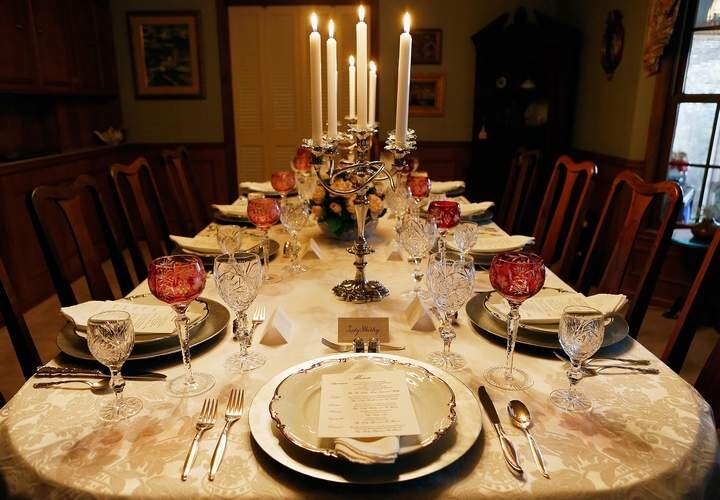Can We Use Paper Plates Tonight?
We had the pleasure of being invited to a friend’s home for supper one evening. These folks live in the burbs and have a couple of teenagers who, as you know, have busier social schedules than I ever could have imagined at their ages. We arrived a little before dinnertime to enjoy a glass of wine while our hostess finished preparing the meal.
Her teenage daughter was asked to please set the table.
She immediately responded with “Can we use paper plates tonight?”
I smiled thinking about how much I hated to do dishes when I was a teen. Her mother was quick to remind her that while she understood her daughter had somewhere to be after dinner, they had guests and asked that she set the table appropriately.
When we all settled down to enjoy our meal, my friend’s other teen became curious.
“Why did they use so much silverware in the old days?” he asked.
We talked a little bit about the Victorian Era and why the table was set so elegantly and extensively.
After I returned home the conversation resonated with me, and I decided to better understand what was going on almost 200 years ago when people sat down to dine.
Victorian Protocol
The Victorian Era was named aptly for Queen Victoria who was on the throne in England from 1837-1901. It was a time of both elegance and poverty with a gaining working class. In most homes there were spoons, knives, and perhaps a two-tined fork. The utensils were appropriate for the foods being served in lower to middle class homes. Those being savory stews and foods prepared in the family’s single cooking pot.
Conversely, on the other side of town, dining was a social activity with many etiquette rules. Specifically, when addressing the table setting, the hosts and hostesses of the era had their tables set to accommodate the many courses served at dinner. It wasn’t unusual to host a formal meal during the week and invite a lot of guests.
Guests were seated to invited because of their ability to engage in intelligent conversation or their wit. The highest ranking male visitor was seated to the right of the hostess and the highest ranking female guest to the right of the host.The husband and wife did not sit together as it was thought that they saw enough of each other at home.
Of course, proper etiquette was never to talk of politics or religion. Other odd formalities were not to eat too quickly or too slowly. Either was considered vulgar with eating too fast akin to being poor and too slowly with being finicky. Food was served in multiple courses – at times up to 25 with soup and fish at the onset. It was considered rude not to eat the soup course.
Which Fork Should I Use?
I’m sure, you, like me, have been seated next to someone at dinner when they whisper “which fork do I use?”
I always giggle and whisper back “work from the outside in”.
With 25 courses being served at one sitting, the proper table setting included a specific utensil for each course. As shown in the diagram, there could be 3-4 forks, knives and glasses to each plate. At times, the entire table was cleared including the linens when the second course was served. Each guest was provided a water bowl to clean fingers. Woman placed their napkins in their laps, and gentlemen tucked theirs into their collars.
Each place setting also included a minimum of 4 glasses so the guest could enjoy white or red wine (depending on the course), a glass of water, and of course, a sherry for the end of the meal. Appropriate plates were placed at each seat and included a bread dish and perhaps a bone dish for discards.
The tables were set beautifully with stunning silver and crystal. Opulence at its very best. However, the entire evening, while enchanting, was ladened with specific social expectations.
In essence when hosting a party for 10 guests, the kitchen help could essentially end up washing a minimum of 90 pieces of flatware alone. Time and change pressed even the most austere families to adopt a more casual approach to the way dinner was prepared and served over the years.
As I reflected some more about our evening with our friends and then my findings — especially about the amount of dishes, I’m of the opinion that it was a teenage girl invented the paper plate!




